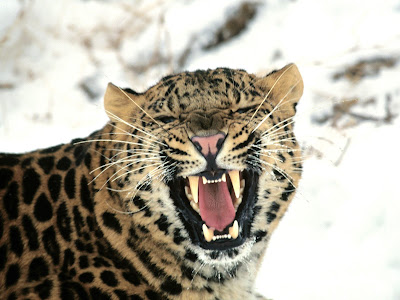True Wild Life |
Asian Elephant |
Asian Elephants are much smaller than the
African elephants only growing to a couple of meters tall.
Asian elephants are found in the tropical jungles of
India and
China, and throughout most countries in south-east Asia. Asian elephants have been
domesticated for hundreds of years for foresting and often battle. There are many places across Asia where Asian elephants are kept for tourists to ride, and are often treated fairly badly.
Asian elephants are well known for their immense strength and friendliness towards humans.

Today, the Asian elephant is considered an endangered species with only around 50,000 left in the wild. This is due to the loss of habitat of the Asian elephant and illegal poachers hunting the Asian elephant, for their skins and ivory. The Asian elephant has smaller ears than the African elephant and the Asian elephant also has a more curved spine than the African elephant. Unlike the African elephants, the female Asian elephant very rarely have tusks, and if the female Asian elephant does have tusks, they are generally barely visible and can only be seen when the female Asian elephant opens her mouth.

The Asian elephant follows strict migration routes that are determined by the monsoon season. The eldest elephant of the Asian elephant herd is responsible for remembering the migration route of its Asian elephant herd. This Asian elephant migration generally takes place between the wet and dry seasons and problems arose when farms where built along the migratory routes of the Asian elephant herds, as the Asian elephants caused a great deal of destruction to the newly founded farmland. Asian elephants are herbivorous animals meaning that they only eat plants and plant matter in order to gain all of the nutrients that they need to survive. Asian elephants eat a wide variety of vegetation including grasses, leaves, shoots, barks, fruits, nuts and seeds. Asian elephants often use their long trunk to assist them in gathering food.

Due to their large size, Asian elephants have very few predators within their natural environment. Besides human hunters, tigers are the primary predator of the Asian elephant, although they tend to hunt the smaller Asian elephant calves rather than the much larger and stronger adults. Female Asian elephants are generally able to breed by the time they are 10 years old, and give birth to a single Asian elephant calf after a 22 month gestation period. When the Asian elephant calf is first born, it weighs about 100 kg, and is cared for not only by it's mother by also by other female Asian elephants in the herd (known as aunties). The infant Asian elephant remains with its mother until it is around 5 years old and gains its independence, with males often leaving the herd and female calves staying.

Today, the Asian elephant is considered to be an animal that is in immediate danger of becoming extinct due to the fact that Asian elephant populations have been declining at a critical rate. Asian elephants are thought to be suffering primarily due to habitat loss in the form of deforestation and hunting for their ivory tusks by human poachers.
















































